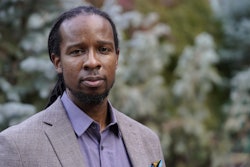The American Community College by Arthur M. Cohen and Florence B. Brawer Jossey-Bass, Inc., San Francisco, 1996 512 pages
Hardback: $38.95
Now in its third edition, Cohen and Brawer’s The American Community
College has achieved and exceeded the status of earlier classic
overviews of the field, many of which I have used in a graduate class
on the community college over the past two decades at Teachers College,
Columbia University.
While most of the books are good, none is as satisfying as The American Community College.
As in previous editions, the authors raise important questions that
must be addressed by those of us practicing in the field. What would be
the shape of American higher education if the community colleges did
not exist? Have changes in the students and society we serve changed
the mission of this community-centered institution? Have we been
overusing part-time faculty? Will changing patterns of financing our
operations lead to positive or negative changes? Will newer modes of
delivery of instruction compete with what our institutions have been
doing comfortably for so long? Who will make the tough decisions we
need to address — the boards, the faculties, the administrations, the
students, the unions, the politicians, the media, or some combination
of them all? What are our most important functions, and do we nourish
them adequately? Will conflicting forces — to change the colleges or
to keep them the same — tear the institutions apart? Will there he
increased interference in the internal governance of the institutions?
And how will that be faced? How does one answer the critics of our
mission?
Not all of these questions are answered in the book, nor should
they be. The authors make clear that these are living and breathing
institutions that evolve like their book and that will change over
time, as they should.
The authors have become synonymous with the community college
movement. A look at any bibliography finds their names in it
repeatedly. They have visited hundreds of institutions all over the
country. They have lead the University of California at Los Angeles’
ERIC Clearinghouse for Junior Colleges since its inception in 1966 and
have supervised and/or conducted important research in the field
through the Center for the Study of Community Colleges. They are the
editors of the New Directions for Community Colleges series published
quarterly by Jossey-Bass since 1973 when it began.
They have written an interpretive analysis and reproduced a book
that covers both fact and opinion, theory and practice and, in so
doing, they have once again rendered our field a great service.
Since it has undergone two revisions — and since I have used all
three over the years — it is necessary to examine how the current
volume improves upon the earlier editions.
The index is as thorough as ever. However, the number of references
cited — always impressive in the previous editions — jumped 46
percent from the first edition to the second, another 16 percent for
the third edition, and contains the most up-to-date sources for
students of the field. The authors also assure the reader that all
important points of view have been covered. They do not shrink from
presenting the views of critics of our colleges and our mission.
The order of the chapters and the subjects covered has not varied
from the first edition. The authors begin with the history and mission,
and wend their way through students, faculty, governance and
administration, finances, instruction and student services. It also
includes five chapters on career, developmental, community, transfer
and general education.
In this third edition, the authors add a chapter on “Scholarship:
Research In and About the Colleges,” and conclude with a look toward
the future — a chapter that they had added between the first and
second editions. This chapter recaps the book area-by-area with a view
toward what we in the held should expect with the coming millennium. It
is useful for the practicing faculty member and administrator, as well
as researcher interested in the field. In this chapter, the current
edition also adds information on institutions, finances and the social
role.
Just an analysis of this chapter alone shows the value of the
authors’ new edition, for it points out the context in which we will be
operating — increased immigration; multi-lingualism; overcrowded home
conditions; workforce and workplace changes; media influences;
socioeconomic differences; the influence of unions and of
entrepreneurship; and forces that impinge on youth, such as gangs, and
“a seeming paucity of civility when compared with an earlier era.”
Yet, the book does not end on a pessimistic note. To borrow a
subtitle from a prior work, Cohen and Brawer point out both the
progress of the past and the prospect for the future without giving
short shrift to the perils and promises of the present.
COPYRIGHT 1997 Cox, Matthews & Associates
© Copyright 2005 by DiverseEducation.com


















